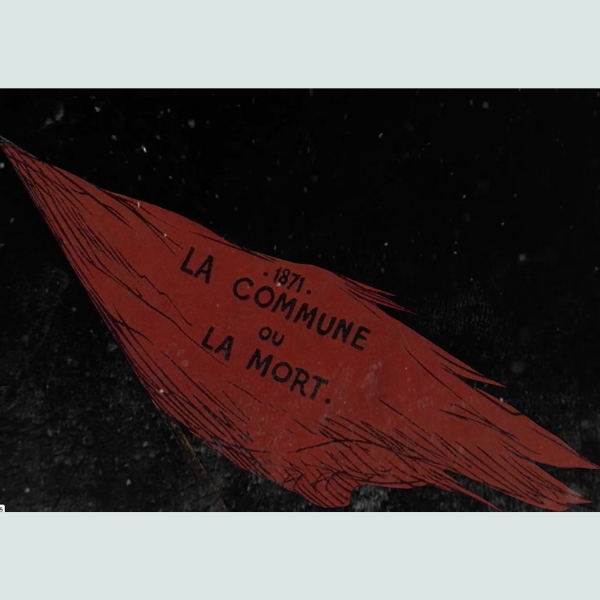Op 18 maart 1871 kwam het uitgehongerde volk van Parijs in opstand tegen de regering in Versailles en riep de Commune van Parijs uit. Dit revolutionaire regime streefde naar radicale hervormingen, maar werd al na twee maanden bloedig neergeslagen door het Franse leger.
Toch blijft de Commune een van de eerste grote pogingen om een samenleving op te bouwen gebaseerd op gelijkheid, arbeidersmacht en directe democratie. Ondanks haar korte bestaan had ze een diepe invloed op latere socialistische en revolutionaire bewegingen. Ze werd een symbool van verzet tegen autoriteit en kapitalisme en inspireerde wereldwijd revoluties en arbeidersstrijd.
De Commune leeft voort in symbolen: ‘Le Temps des Cerises’, de Rode Vlag, het beeld van Marianne op de barricades. Voor velen roept ze romantisch-nostalgische gevoelens op. In onze herinnering heeft de droom het gewonnen van de werkelijkheid. Maar in feite was de Commune een genadeloze burgeroorlog. Wat begon op 18 maart eindigde op 28 mei in een bloedbad, met de massa-executie van de laatste opstandelingen.
De opstand vond plaats in een tijd waarin de opkomende industriële wereld voor het eerst werd geconfronteerd met socialistisch verzet. Binnen die jonge beweging woedde een fundamentele discussie: kiezen voor organisatie of directe actie? De Commune gaf hoop aan revolutionairen die met geweld de bestaande orde wilden omverwerpen. Maar haar mislukking sterkte uiteindelijk de aanhangers van een geleidelijke aanpak in hun overtuiging. Die tegenstelling bepaalde niet alleen de toekomst van het socialisme, maar ook de manier waarop de Commune werd herinnerd.
Bekijk hier ook de Engelse versie:








